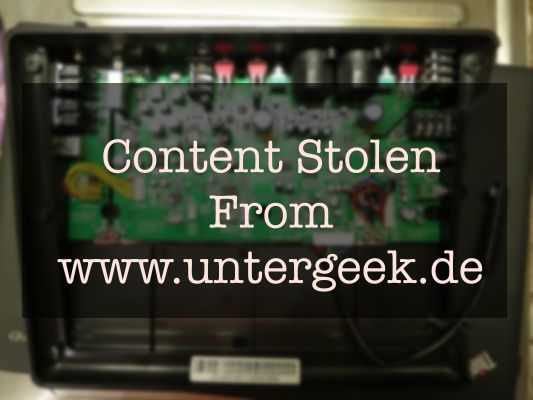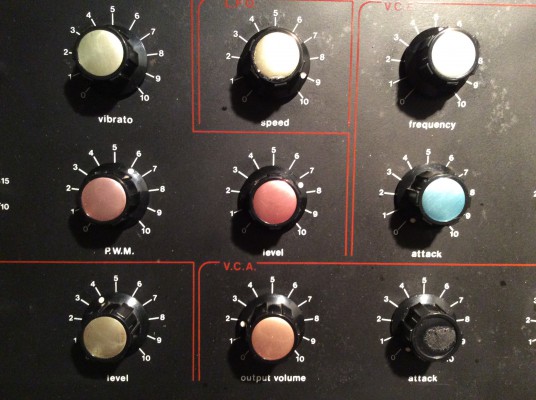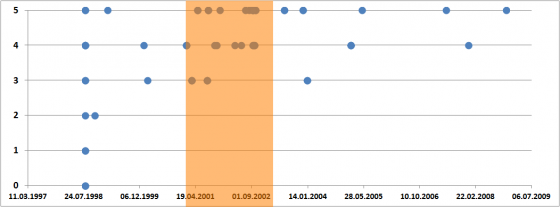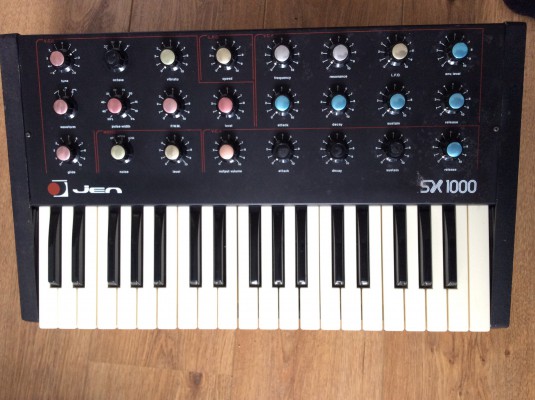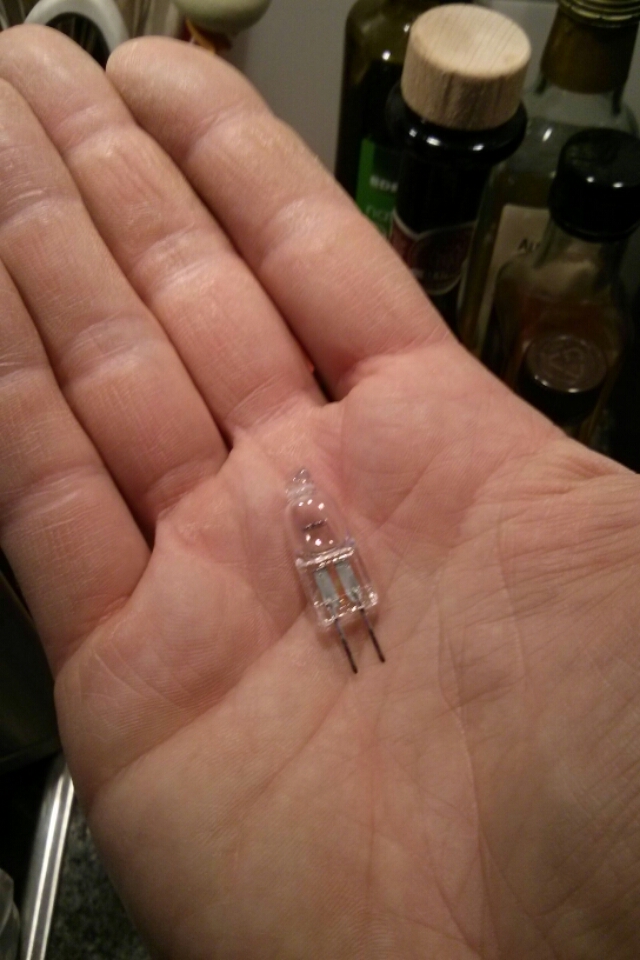If you have found this blog searching for the Oberheim Matrix-6/1000 synthesizer, you may already know that I still haven’t given up on breathing new life into hardware and software of this wonderful machine, and that I have made a controller template for the iPad. A controller, mind you, not a true editor – but a tool to control each parameter in a sound preset via a dedicated touch control, and pretty much without alternative.

No longer – there is a true Matrix editor app in the Store now, Patch Touch by Coffeeshopped, LLC. How does it compare? Is it worth the 15 30 Dollars or Euros? Chadwick, the guy behind Coffeeshopped, was so kind as to send me a download code for his app, and to comment on an early draft of my observations, so you’ll find my remarks updated with his comments here.
Continue reading
7 Apple-][-Spiele, die man WIRKLICH gespielt haben sollte
Es ist der “Editors Pick” im heutigen Wired-Newsletter: eine Liste mit Spielen für den Ur-Heimcomputer Apple II. Alle bei Archive.org hinterlegt und dort über den Online-Emulator spielbar wie damals. Perfekte Retro-Clickbait, zumal das Rezept so einfach zu übertragen war.
Es gibt nur ein Problem mit dem Post: Die Liste ist Scheiße.
Hat der eigentlich je einen Apple II gesehen, geschweige denn darauf gespielt? Ich sage das als jemand, der seinen Apple II wirklich geliebt hat – und sich sehr darüber wundert, wenn da mal fröhlich behauptet wird, der Apple hätte hochauflösend nur 2 Farben zur Verfügung gehabt. (Es waren fünf, und lasst mich jetzt nicht vom Farbraum-Bit anfangen, weil… naja, ich reagiere empfindlich auf so was.) Zugegeben, das sind Mäkeleien, die schlecht nach altem Geek riechen. Und über Geschmack soll man nicht streiten, schon gar nicht bei persönlichen Zusammenstellungen. Aber ich finde schon auffällig, dass auf der Liste fast ausnahmslos Portierungen von anderen Systemen stehen, und dann nicht mal gute – meiner unmaßgeblichen Meinung nach.
Deswegen ohne weitere Vorrede eine Liste von sieben Spielen, von denen ich meine, dass man sie kennen sollte – Spiele, an denen mein Apple II und ich nicht vorbeikamen. Leider sind nicht alle bei archive.org. Aber zu finden sind sie trotzdem.
(Und weil ich gerade nur iPad und Handynetz habe, habe ich keine Lust, Bilder zu suchen.)
1. Choplifter
Ich erinnere mich noch, wie ich das Spiel zum ersten Mal an einem Stand der Hobby Elektronik in Stuttgart gesehen habe und wie vom Donner gerührt war: So smooth, mit so bruchlosem Gameplay – das fühlte sich erstmals wirklich an wie ein Spiel am Automaten und nicht wie eine mangelhafte Kopie. Das Spiel war so gut, dass es auch den Sprung auf den PC gut überlebt hat – dort oder am C64 haben es wohl die meisten kennen gelernt. Aber es stammt vom Apple!
2. Dieses Spiel von Jordan Mechner
Lasst uns nicht über Prince of Persia sprechen. Ein nahezu perfektes Videospiel, gemessen an den Möglichkeiten seiner Zeit. Es hatte seinen Ursprung auf dem Apple II, auf dem Jordan Mechner schon ein paar ziemlich fiese Tricks einsetzen musste, damit die Kampf-Animationen so flüssig liefen – erst neulich hat er den Source-Code zufällig wiederbekommen und geriet selbst ein wenig ins Schwärmen – aber bekannt und berühmt geworden ist es auf dem PC. Deswegen lieber ein Wort über Jordan Mechners erstes Spiel: Karateka, ein Sidescroller mit nettem Kampfsystem, technisch und ästhetisch brilliant und mit ganz, ganz viel Charme.
3. Aztec
Action-Adventure-Platformer. Hinter diesen drei dürren Worten versteckt sich ein Spiel, das den eben erwähnten und 7 Jahre später entstandenen Prince of Persia in vielem hinter sich lässt: Der an Indiana Jones angelehnte Held kämpft sich durch ein Atztekengrab, randvoll mit Schatzkisten, Fallen, Pantern, Schlangen, Krokodilen und anderen Nettigkeiten, bewaffet mit nichts als seiner Peitsche, seinem Revolver, einer Machete und ein paar Dynamitstangen. Ja, Dynamitstangen! Ein Riesenspaß, der es nie auf den PC geschafft hat. Schade.
(Aztec bei Virtual Apple – Emulation über ein Browser-Plugin)
4. Bilestoad
Killerspiele? Ha! Zwei Gladiatoren stapfen durch eine futuristischen Arena, in der Flugscheiben und Teleportpunkte verteilt sind, und hauen mit der Axt aufeinander ein, bis ein Arm am Boden liegt (oder auch der Kopf). Große Blutflecken. Und zu allem düdelt “Für Elise”. Man sieht den Kämpfer in der Draufsicht und kontrolliert die Bewegungen, den Schwert- und den Schildarm. Ein merkwürdiges Spiel. Angeblich ist der Name eine Verballhornung von “Beilstod”. Das Ganze ist so abgedreht, dass nicht nur 15-Jährige daran eine Menge Spaß haben können. Und der Ruch des Verbotenen!
(Bilestoad bei Virtual Apple – Emulation über ein Browser-Plugin)
5. Apple Panic
Wenn schon Portierung, dann schräg. Diese Variante des Arcade-Klassikers Space Panic dreht sich um wild gewordene, naja, Äpfel. Die man einbuddeln und durch die Plattformen klopfen muss, um sie zu besiegen. Ein Spiel, das mir beibrachte, dass man auch die Generation meiner Eltern zum Zocken bringen kann.
6. Hitch Hiker’s Guide to the Galaxy
Dieses Spiel kann einen WAHNSINNIG machen. Zumal es ja zur Zeit seiner Entstehung noch kein Internet zum Nachgucken gab. Wie alle Adventure-Spiele von Infocom mit einem intelligenten Parser und ziemlich hinterhältigem Humor, aber ohne Grafik. Von Douglas Adams selbst mitgeschrieben. Übrigens war Douglas Adams nicht der einzige Bestseller-Autor, der ein ziemlich gutes Händchen bei der Umsetzung eines eigenen Buchs in ein Spiel hatte – auch Michael Crichton hat ein Adventure mitgeschrieben, das bemerkenswert ist. Auf andere Art.
(Hitch Hiker’s Guide to the Galaxy, 30th Anniversary Version der BBC)
7. Pinball Construction Set
Flipper! Am Computer! Nicht nur spielen, sondern selber bauen. Mit virtueller, selbst verlöteter Logik. Okay, die Physikengine ist etwas unzureichend – der Ball kommt dank Rundungsfehlern nie wirklich zur Ruhe – und es bleibt das Grundproblem, dass Flipper sich auf einem Querformat-Bildschirm einfach nicht gut spielen – aber die unzähligen Möglichkeiten, etwas auszuprobieren! Und die üben einen unglaublichen Sog aus. Der Wert dieses Spiels, bei all seinen Fehlern, besteht darin, eins der ersten Sandbox-Games gewesen zu sein.
(Pinball Construction Set bei Virtual Apple – Emulation mit Browser-Plugin)
Bonus: Dragon Maze
Das erste Spiel, das ich auf dem Apple II gespielt habe – kurz nach dem Weihnachtsabend, an dem ich die Kiste (gebraucht) von meinen Eltern bekam. Und das erste, das ich verändert habe. Dieses Spiel gab es als Listing – abgedruckt im “Red Book”, im Original-Handbuch zum Apple II (in dem sich auch seitenweise Source Code der internen Routinen des Apple fanden, und viele andere Geheimnisse). Es war in Basic geschrieben und passte in wenige Kilobyte. Okay, die Klötzchengrafik war eher bescheiden – aber es ließ die Wand zwischen Gamern und Codern ganz, ganz dünn und durchsichtig werden. Und viele sind durchgeschlüpft.
Could you also patch an Alesis IO Dock II?
Is it possible to retrofit an Alesis IO Dock II with an internal USB hub, just like I did with my IO Dock 1? TL;DR: Some have tried and failed – seems like Alesis deliberately switched the code for this hack off.
This photo was sent to me by Blek in the Czech Republic who asked that very same question. He has taken a look inside his IO Dock II and noted that it features an all-new PCB, so my original hack won’t work. And of course there is no guarantee that the prerequisite for the original hack is still implemented in the IO Dock II: the ability to function not only as a USB bus host for the iPad, but as a USB bus slave device, with the iPad working as the bus master.
The good news is: It is simple to give it a go, as Alesis took extra care to label the locations of the USB bus signals:
So here is what you do to try it:
- Get a male-female pair of plugs matching the connector in question. Possibly a 12-pin version of these connectors, so as in the original hack, 2mm pin grid stripes could work. They are a bit hard to come by, but it is possible.
- Solder connections from male to female for all lines but 6 and 7 – the D- and D+ USB data signals.
- Get a suitable UBS2.0 hub – I used a Belkin F5U404; you might have to try a couple of hubs if that one does not work.
- Take the cable that is meant to connect the hub to the computer – it should have a standard USB plug on one end and a USB mini connector on the other end – and cut it in half. This is the only non-reversible action you are taking, but as it is easy to buy a replacement cable, there is not much harm done if it does not work.
- Take the cable half with the USB A-type plug, for connecting it with the computer. Solder the cable wires to the connector that goes into the IO Dock side as follows: Red (Vcc) -> pin 1, White (D-) -> pin 6, Green (D+) -> pin 7, Black (GND) -> pin 8.
- Take the other cable half with the USB mini-B plug for connecting to the hub and solder it to the iPad side, i.e. to the connector that is leading to the iPad connection cable. Once again, solder red to 1, white to 6, green to 7, and black to 8.
- Do some checking for connections and possible short-circuits. Believe me, it’s worth the effort.
- Unplug the IO Dock board connector for the iPad. Insert your freshly-made adapter.
- If it works, make a video of it. Become world famous. :)
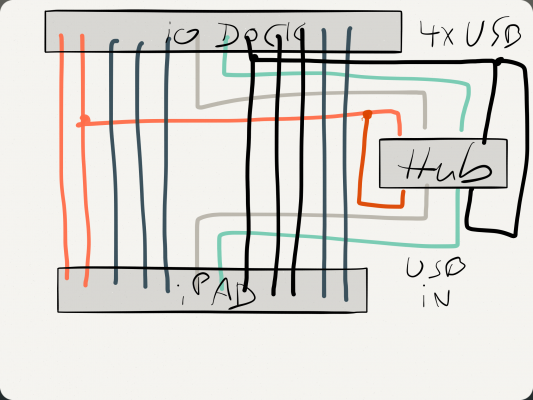
Wiring the USB hub connector: Once again, the trick is having the iPad work as USB host rather than as a slave device, and the IO Dock as the slave rather than as the host. Use your hub’s connector cable, cut in half, and solder the color-coded wires to the connectors as shown.
Just to be sure:
- I’d strongly advise you to solder and try out the adapter rather than soldering any wires to your IO Dock. It is a good thing to keep that sort of stuff reversible. For this reason, don’t start dremeling before proving that it actually works…
- …which I won’t guarantee you. Mind you, I don’t even own an IO Dock any more. If you start doing this, you should know what you are doing.
- Please understand that the base for this hack is a feature that Alesis seems to have implemented deliberately into the first IO Dock (see Dan Radin’s comment): the ability to work as a USB slave to the iPad, in addition to normal operation, where the IO Dock works as a host for the iPad. If the IO Dock does no longer do that, you can try to rotate the USB hub, but that’s about it.
- Please write me back with your experiences. Please don’t get on my tits with any attempts to make me do this hack for you, or repair your IO Dock if anything went wrong. (Oh my god – I just realize that bullshit warnings are obviously contagious.)
It’s worth giving it a try, isn’t it?
Thanks to Blek for allowing me to use his pictures.
Oberheim Matrix-6 source code file available
Update: Looking for the new, rewritten firmware? Info on how to get the latest version here.
There is some (potentially) very good news for Matrix-6/6R owners hoping to get a firmware update – it has come a huge step closer. An extremely experienced engineer has just decided to put his annotated source code file for the Matrix-6 online – you will find it on his page at Oberheim Matrix 6 Firmware. Not the original sources from Oberheim, mind you – they are rumoured to have been lost when someone accidentally dropped the master source disk – but a very carefully annotated listing, reverse-engineered. The engineer who did this even spent the time to mark code that has been re-used in the Matrix-1000 firmware.
So what does that mean to you as a (potential) M6 owner?
- If you do not know a thing about coding for a 6809 CPU, possibly nothing. You’ll have to wait.
- But if you are into hacking and tinkering with old 8-bit machinery, it makes understanding the code a whole lot easier – and should also make it possible to backport GliGli’s patches into the M6 firmware, comparing his Matrix-1000 V1.16 code with the original V1.13 code and looking at the changes.
The engineer has decided to abandon the project – he thinks that the performance problems of the Matrixes are a result of fundamental design decisions and would need too much effort to get around properly. But his code definitely improves the chances of doing something useful for the code. Someone with skill and spare time might even backport the M1000’s NRPN and matrix modulation Sysex commands into the M6 code.
BTW: My attempts at starting a documented source code file for the Matrix-1000 can be found here, with a hardware and software primer here. If I can find the time, I’ll try to backport a few of Bob’s insights into the M-1000 code.
With the amount of work waiting for me with Jen, I’m glad I don’t own a M-6…
“Dommschwätzer.” (*)
Jaaaa…. kann. man. so. machen.
Trying to reattach a synth keyboard contact mat after cleaning? Quick tip: Use a needle. pic.twitter.com/tpdbPKpErI
— Untergeek (@untergeekDE) 28. Februar 2015
(*) Ich mag diese Szene: Heinz Becker bedankt sich bei einem hilfsbereiten Baumarkt-Mitarbeiter für den guten Tipp, die gekauften Latten doch zersägen zu lassen, bevor er sie ins Auto packt.
Beware the Kitten-Eating EL Foil!
Actually, this is not about kittens. It’s about renewing the display backlight of an E-MU ESI-32 sampler. Which is quite easy to do if you beware… nah. It is actually quite easy.
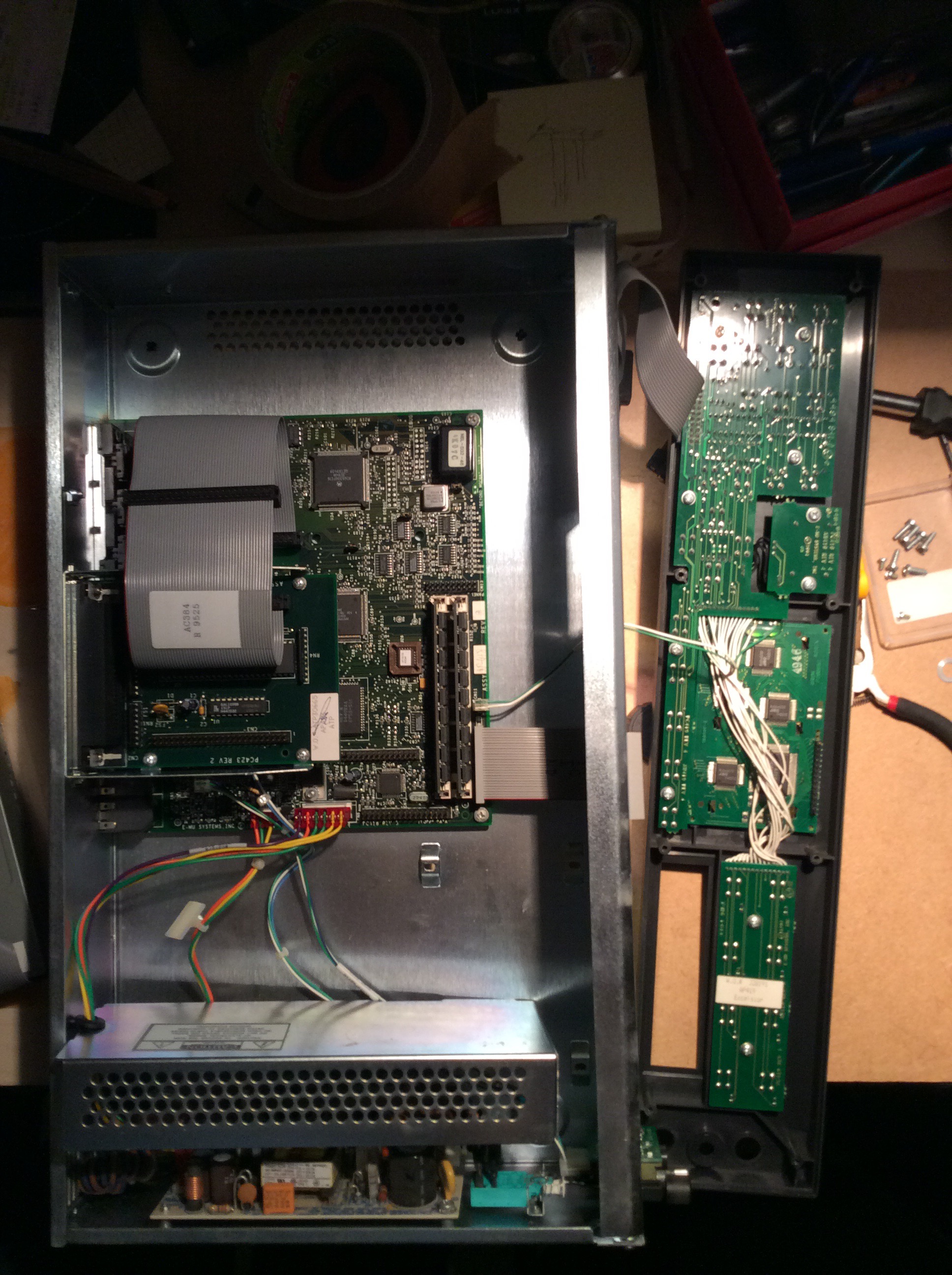
The ESI-32, a 16-bit, 32-voice stereo sampler, is from a cache of music machines stored away in a basement for more than 12 years and which I am helping to restore. I used to own an ESI-4000, so I already knew about its internals. This one suffered from a half-dead display backlight so I decided to replace it.
Continue reading
Adding a slightly odd sub-oscillator circuit to Jenny
Let’s start with some good news: Jenny‘s here to stay with me, so I can start some serious modding. The single VCO and the filter design make it hard for her to growl credibly, so I tried to make her bark and her bite a bit tougher, using bits and gates from my basement supplies: adding a sub-oscillator, and pre-filter overdrive.
Subjenny
The sub-oscillator is simple and has been done by many great modders: You add a divider circuit to produce a one-octave (or two-octave) square-wave sub-oscillator and feed the signal to the unused “Off” terminal of the noise selector switch (over a 100k resistor so that the sub-osc signal is not overly loud). So now when the noise generators are switched off you can use the noise dial to add some deepness.
When exactly did analog synths become cool again?
Have a look at this picture.
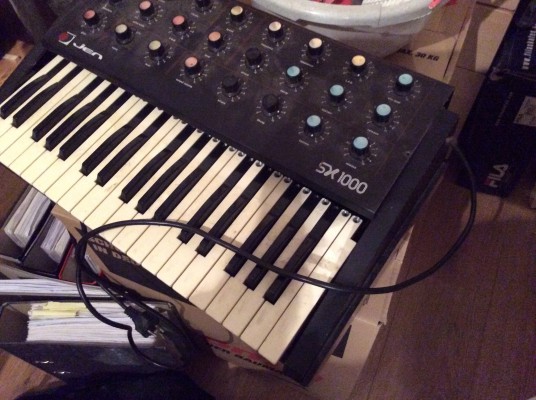
Do you like what you see? Of course you do.
Analog is cool. Prices for analog gear are consistently going up. Just when processing power, sophisticated audio algorithms and smooth user interfaces have become ubiquitous, manufacturers have started developing and selling new analog synth hardware. Yes, I know: Analog sounds different, you say. Tell you what: I don’t believe it. Reminds me of those types who swore that golden CDs sounded better than the silver ones. It’s not the sound. Like I said: Analog is cool.
Just about thirty years ago, analog became uncool. Yamaha’s digital DX7 synth proved that digital was cheaper, more reliable, and more versatile than the old technology. Analog became harder and harder to sell, even in the discount variety that came without all the expensive knobs and switches, and one by one, the former giants went out of business: ARP. EMS. Oberheim. Moog. The whole Italian synth industry. Poof.
When did analog become fashionable again? The simple JEN synthesizer I am fixing and upgrading may provide an answer to this question. To be honest, there is quite a lot not to like about this machine. Single oscillator: tends to sound thin. Simple filter design: lacking bass punch and proper key tracking. Only one LFO with only one waveform (triangle). Portamento but no legato. Not to mention the no-brainers of modern (ie 1980s ff.) technology: preset memory, MIDI and USB interface, stable tuning.
On Sonicstate.com, there is a review page for the Jen SX-1000. Users may rate their synth from 0 to 5 points, 5 being the top rating. Taking these reviews, you can see the gradual change from fairly mixed reviews to an unanimously positive opinion.
Granted, there is a systematic bias: why should anybody who didn’t like analogs to begin with acquire and rate a Jen? Still, this graph shows one thing to me: The point where analogs became cool again was somewhere around 2001 to 2002.
Now we know when. If you’ve got the patience, let me argue why.
Reviving Jenny, or: contacts cooked to life
An Italian beauty, fallen on hard times – starting her career as a budget singer, forced out of business, living in a basement for more than a dozen years – and come to my house by accident. Now I am trying to get her back in shape – and to make her voice fuller than it has ever been. Her full name is JEN SX-1000 Synthetone, but she is affectionately known as Jenny.
Sorry: Blog war down…
… Schuld war das Jetpack-Statistik-Plugin von WordPress, mit den mal genau gar nichts mehr ging nach dem Update. Weil ich so was schon vermutet habe, war die Reparatur eine Sache von 5 Minuten – aber die hatte ich eben erst heute. Sorry! Dabei gibt’s so viel zu erzählen – #retro #synthesizers #modding. Stay tuned.
